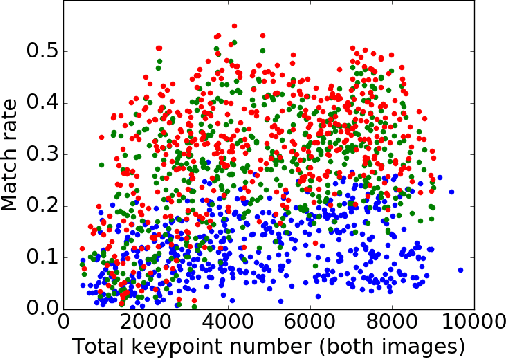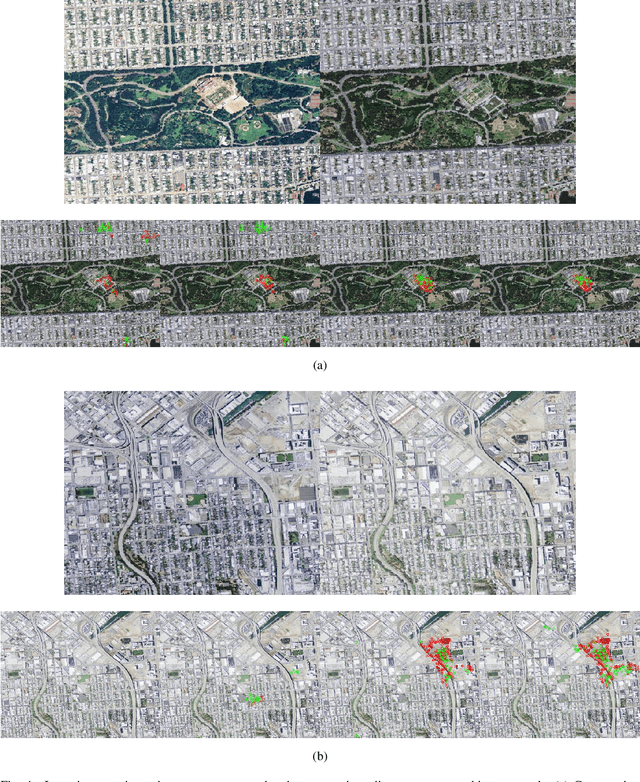Detecting Human Interventions on the Landscape: KAZE Features, Poisson Point Processes, and a Construction Dataset
Paper and Code
Mar 29, 2017



We present an algorithm capable of identifying a wide variety of human-induced change on the surface of the planet by analyzing matches between local features in time-sequenced remote sensing imagery. We evaluate feature sets, match protocols, and the statistical modeling of feature matches. With application of KAZE features, k-nearest-neighbor descriptor matching, and geometric proximity and bi-directional match consistency checks, average match rates increase more than two-fold over the previous standard. In testing our platform, we developed a small, labeled benchmark dataset expressing large-scale residential, industrial, and civic construction, along with null instances, in California between the years 2010 and 2012. On the benchmark set, our algorithm makes precise, accurate change proposals on two-thirds of scenes. Further, the detection threshold can be tuned so that all or almost all proposed detections are true positives.
 Add to Chrome
Add to Chrome Add to Firefox
Add to Firefox Add to Edge
Add to Edge